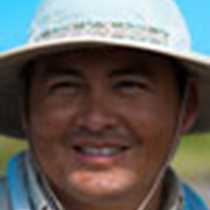After navigating for six hours, we arrived at sunrise to the island of the birds. At the same time flocks of red-footed boobies were heading to their feeding grounds, located at the northeastern corner of the Galapagos Archipelago.
The morning outing began with kayaking along the cliff of an old collapsed magma chamber. We spotted different species of sea birds as well as marine mammals. At Darwin Bay we took a walk along a tidal channel and due to the low tide we were able to access restricted areas. There we found yellow night crown herons and swallow-tailed gulls with their chicks. We also saw frigate birds, sharp-beak finches, also known as “vampire finches”, and mockingbirds were sighted in the saltbushes. Afterward, we headed back to the National geographic Islander to get ready for a deep water snorkeling.
The underwater realm was ready to offer us a wide variety of fish. For example, hammer head shark, parrotfish, wrasse, yellow fin tuna, moorish idol and few other species of fish from the indo pacific region were spotted in the calm warm water of Darwin Bay. An interesting morning on one of the most pristine islands in the Galapagos paid off.
The afternoon excursion took place at Prince Phillip’s steps. We walked through incense trees and yellow cordia forests that led us to a lava field. During our walk we sighted red-footed boobies and the endemic Nazca booby. Our natural quest took us to unblemished rusted lava, created by the exposure of oxygen. The volcanic flows with lots of crevices and small lava tubes are perfect places for short-eared owls to hide from their prey. After a lot of patience scanning the lava field, we were able to spy two owls a few feet away.
Our day ended listening to Mother Nature. The sounds of the birds, wind and breaking waves filled our ears as the sun was setting at the horizon.







